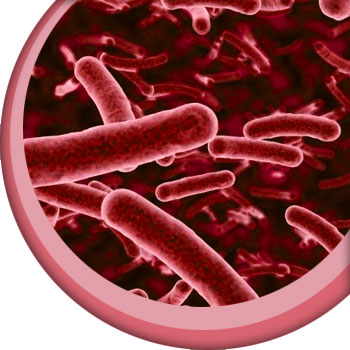Resistance Mechanisms
for Specific Antimicrobials
Aminoglycosides
• Enzymatic modification of the antimicrobial by aminoglycoside-modifying enzymes (AMEs) which prevents them
binding to their target (these enzymes are broad spectrum and encoded on mobile genetic elements)55
• Target modification by mutation or enzymatic modification55
• Efflux pumps but these are rare55
Beta-lactam agents
Gram-positive bacteria:
• Expression of low affinity penicillin-binding proteins (PBPs)
encoded on mobile chromosomal elements54
Gram-negative bacteria:
• Production of beta-lactamases54,74
• Production of low affinity PBPs74
• Reducing entry of antimicrobial into the cell by mutations in porins74
• Multidrug efflux pumps to remove the antimicrobial agent from the cell54,74
Fluoroquinolones
Mechanisms in Gram-negative bacteria:
• Chromosomal mutations in quinolone resistance determining regions (QRDRs) of target genes encoding DNA gyrase and topoismerase IV51,53
• Altered expression of porins resulting in decreased antimicrobial penetration of the bacterial cell51
• Chromosomally mediated increased efflux from the cell via multidrug efflux pumps51
• Plasmid encoded protein QnrA which binds to DNA gyrase and prevents the antimicrobial binding to DNA53
Macrolides and Lincosamides
Resistance mechanisms in Gram-positive organisms include:
• Target site modification by methylation or mutation which prevents binding of a broad spectrum of antimicrobials in these classes52
• Plasmid encoded efflux pumps which are usually more specific52
• Drug inactivation but this is less clinically important52
Tetracyclines
Resistance to tetracyclines is usually acquired and genes are usually associated with plasmids or transposons56
• Energy dependent efflux of antimicrobial by a membrane associated protein56,75
• Protection of the ribosomal binding site of the antimicrobial through binding of specific proteins56,75
These mechanisms are found in both Gram-positive and Gram-negative bacteria56
Trimethoprim/Sulphonamide (TMPS)
Plasmid encoded production of insensitive enzymes by bacteria:76
• Single or multiple amino acid substitutions in dihydrofolate reductase (target for trimethoprim)58
• Insertions of one or two amino acids in dihydropteroate synthetase (target for sulphonamides)58

Disclaimer: Indications and doses may vary between products. The antimicrobials listed may constitute an off licence use of the product and as such should only be used according to the ‘Cascade’, further details of which are available on the RCVS, VMD and NOAH websites. Veterinary surgeons are advised to carefully check the Summary of Product Characteristics (SPC) before prescribing a product and obtain informed owner consent where required.

